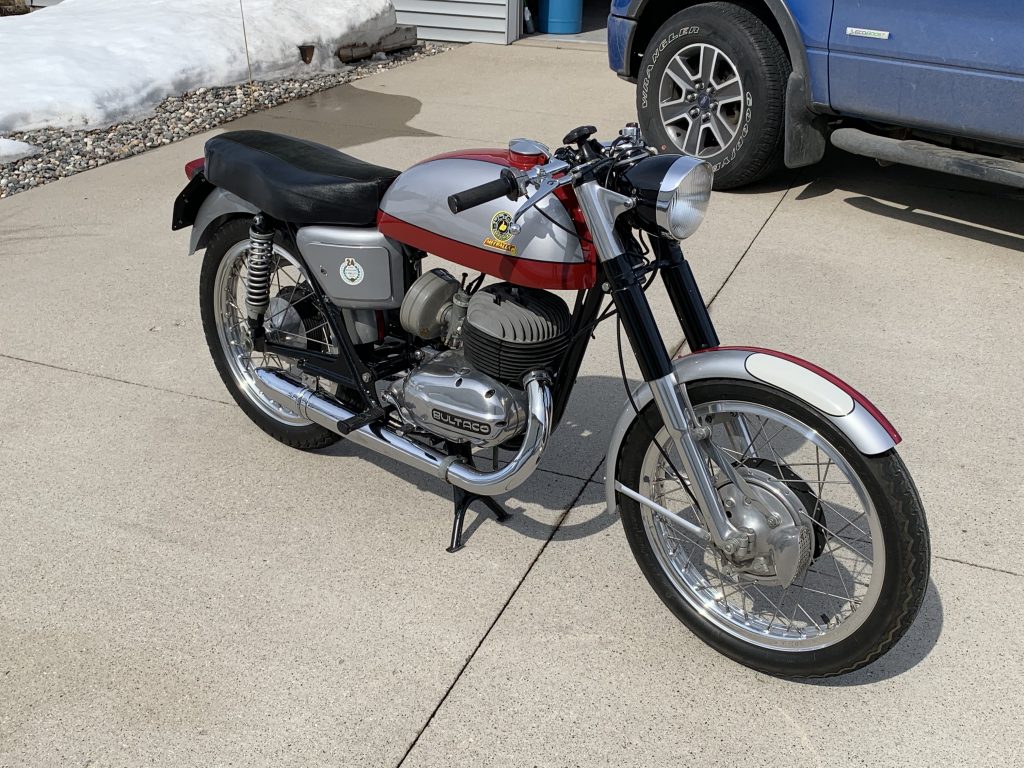
1965 Bultaco Metralla 62 Model 8
HP: 20hp @ 7,000rpm
Engine: 196cc air-cooled 2-stroke single, 64.5mm x 60mm bore and stroke, Compression ratio: 10:1
Weight: 218lb
Fuel capacity: 3.7gal
Price then/now: $685/$4,000-$10,000
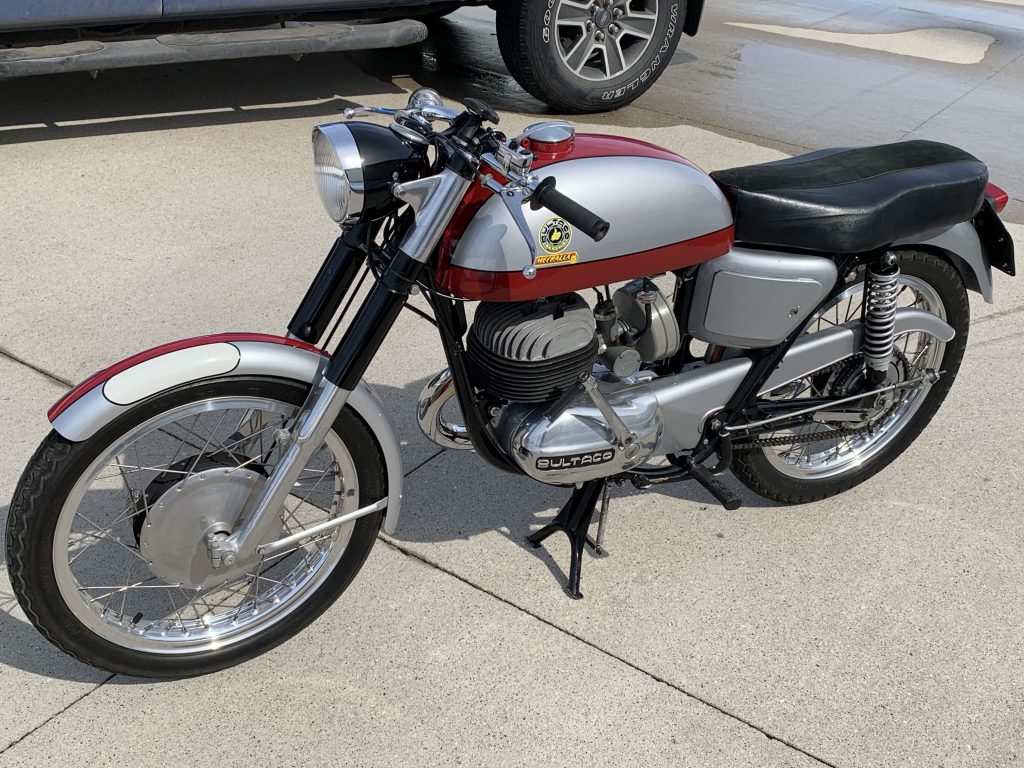
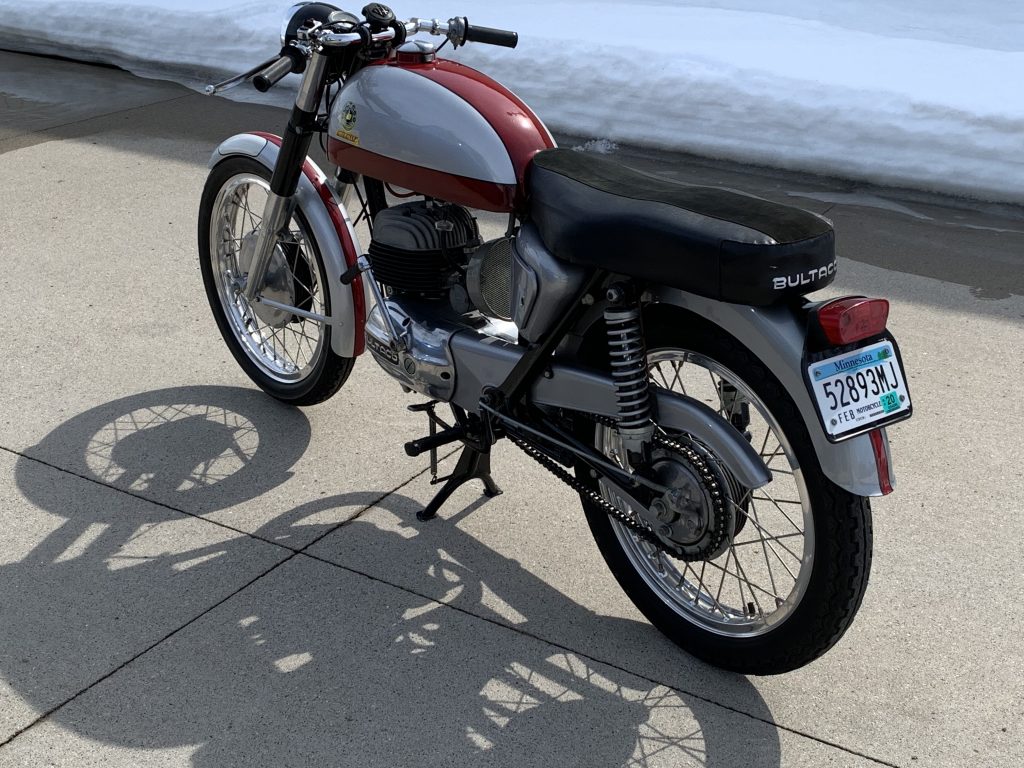
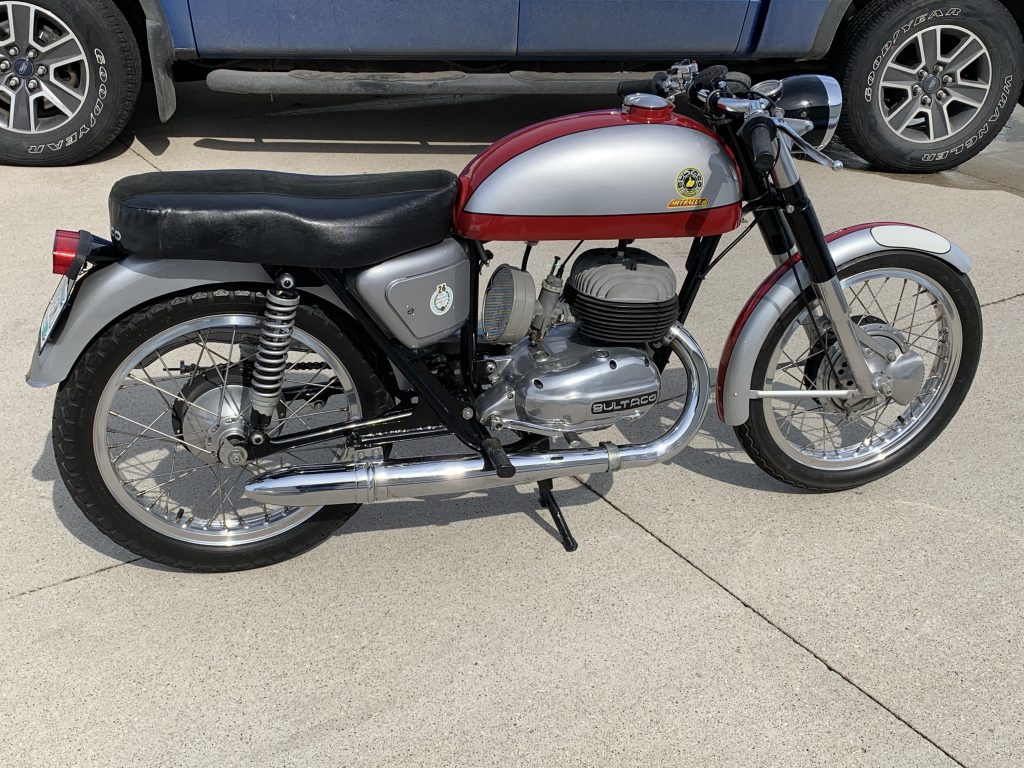
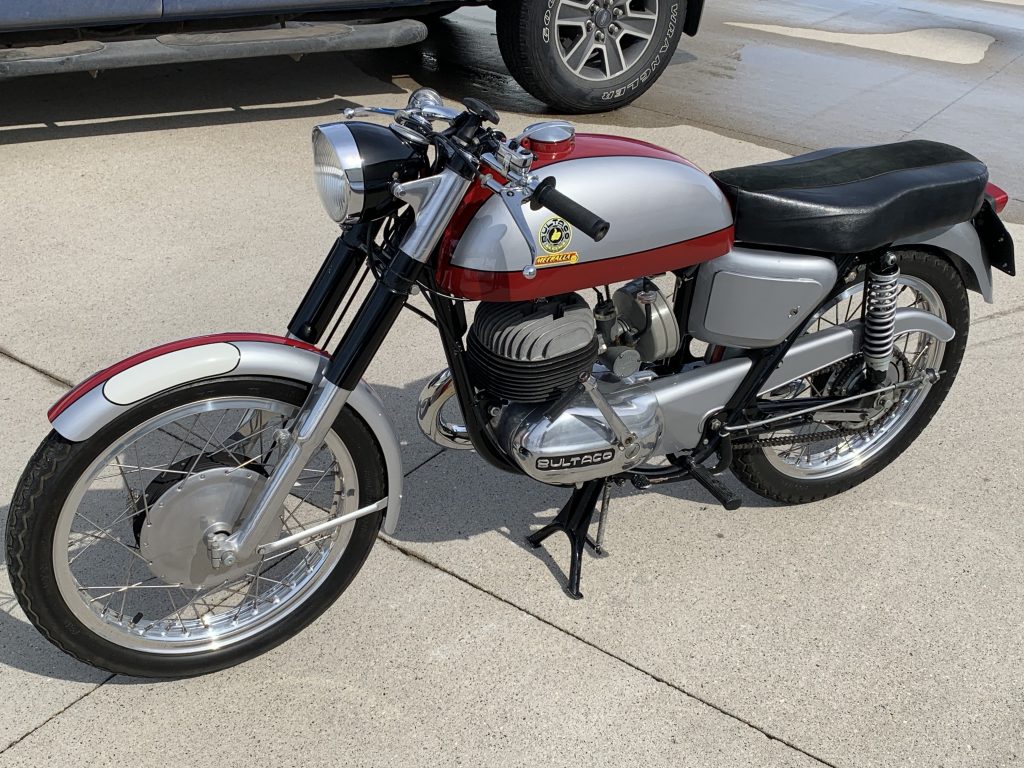
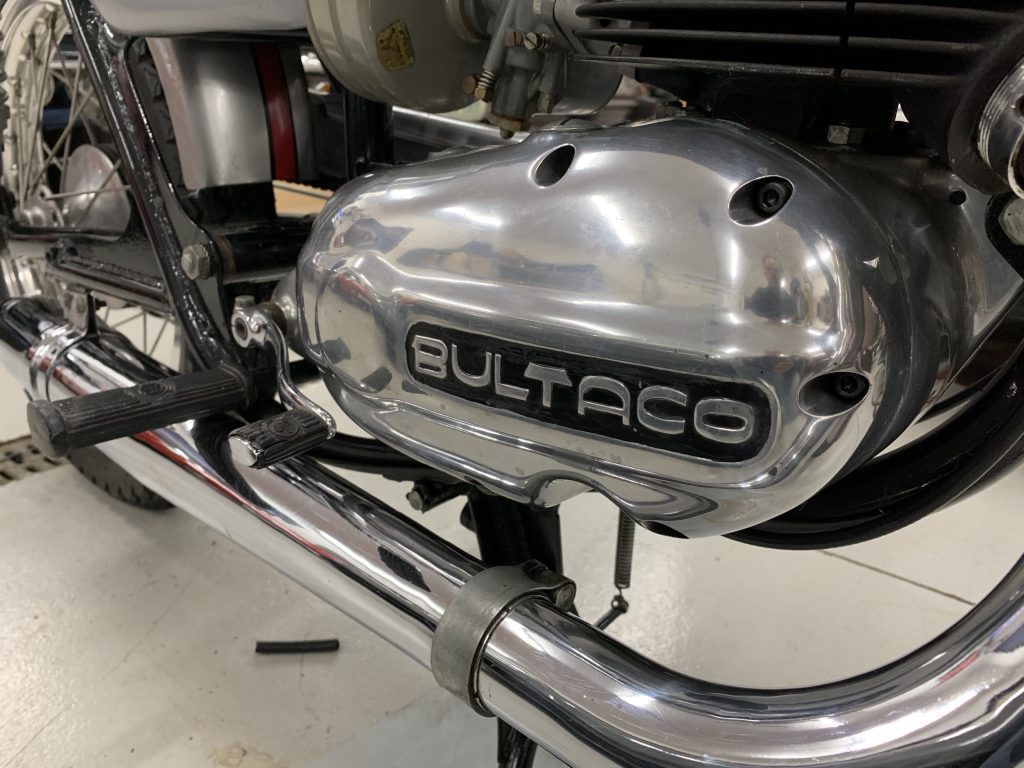

Here is a bike that you do not see everyday. The Bultaco Metralla 62 Model 8 was the bike Barry Sheene began his career in road racing on. Very sexy and exotic then and as it is today as well as being very rare. The Metralla 62 is the 200cc version and the Metralla MK2 came later which was a 250cc version. The Metralla MK2 250cc version is much more common in the US than is the Metralla 62 Model 8. Most of these early models were Euro models with very few being sent to the US. The US models had standard style handlebars and had MPH speedometers.
A LITTLE MORE BULTACO AND METRALLA HISTORY
Shunned by the world’s buyers on its release, in later years Bultaco’s Model 8 Metralla would be regarded as the definitive small capacity sporting single of its day. The Bultaco’s Metralla was never really popular in its day, but it has earned belated recognition to the extent that it now defines an era of motorcycling. Introduced in 1962, the Model 8 Metralla 62 had a 196cc two stroke engine, a four-speed gearbox, and weighed 97kg. When 650cc British twins were running a standing 400m time of around 15 seconds, the little Bultaco was barely a second behind.
With the optional racing kit the Bultaco had a top speed of around 150km/h and would leave all the famed British twins for dead on a mountain road. Compared with other 200s the Metralla was in a class of one.
Bultaco’s 200cc engine grew out of the Tralla 155 and 175cc Sherpa scrambler. Even with a street-legal exhaust system the 64.5mm x 60mm piston-port single managed to put out an impressive 20hp (14.7kW) at 7000rpm. The bike was styled to resemble a European endurance road racer with a large tank, flat bars, and semi-rearset footpegs. In retrospect this look was way ahead of its time but it didn’t translate into sales success, especially in the US where Bultaco was endeavouring to establish itself.
BULTACO RACING
Resistance to two-strokes and its unusual name probably had much to do with this. Metralla may have meant “grape-shot” in colloquial usage but most Spanish-English dictionaries translated this to “shrapnel” – not the most encouraging word to promote an impression of long-term durability.
By 1966 the success of Yamaha and Suzuki two-strokes saw the twostroke street motorcycle becoming more accepted and Bultaco released the Model 23 Mark II Metralla. This looked similar to the Model 8, but was now powered by a 250cc engine producing 27.6hp (20.3kW) at 7500rpm. A five-speed gearbox made the Mark II Metralla much more pleasant to ride and Bultaco released a factory racing kit that transformed it into a highly competitive production racer.
At the 1967 Isle of Man TT Bill Smith and Tommy Robb took first and second in the 250cc production race, Smith winning at an average speed of 142.64km/h. By 1970 Bultaco stopped producing street bikes to concentrate on off-road machines. Then an about-face in 1976 saw the release of the Metralla GT, a touring machine that did little to uphold the sporting spirit of the original Metrallas. Overweight and soft, with alloy wheels and disc brakes, the final Metralla became the GTS in 1978, finally finishing in 1982.
The original Metralla was hugely better than the competition and should have been a commercial success. Although the later Mark II was no longer the ground-breaker its predecessors had represented, it was a superb machine. The MK2 was a delight to ride but a sales failure. These days the Metralla is seen as the definitive sporting small-capacity machine of its era, and the ultimate Spanish classic.
FAST FACTS: BULTACO MODEL 8 METRALLA
• Bultaco was formed in 1958 when Francisco Xavier Bultó left Montesa to set up his own company, Bultaco. The name was a combination of Bultó and Paco (a Spanish nickname for Francisco).
• In March 1959 Bultaco released its first bike, the 125cc Tralla 101, and two months later took seven of the first 10 places in the Spanish Grand Prix.
• Bultaco motorcycles enjoyed considerable road racing success throughout the 1960s and 1970s. New Zealander Ginger Molloy provided its first Grand Prix victory in 1966, and in 1969 Barry Sheene became a works rider. In 1972 a Bultaco 360 won the Barcelona 24-Hour endurance race.
CLOSING OF AN ERA
• Bultaco production ended in 1979. The factory reopened in 1980 but finally closed in 1987. In 1998 Marc Tessier purchased the rights, launching the Bultaco Sherco trials bike. The Bultaco name was dropped in 2001. A total of around 330,000 Bultaco motorcycles were built in Barcelona.
• Former MotoGP racer Sete Gibernau is a grandson of ‘Paco’ Bultó. Bultó died in 1998 at the age of 86, asking to be buried with his Bultaco T-shirt and a properly waxed moustache.